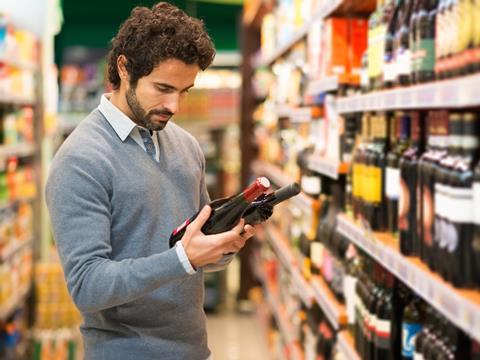
Starting in December 2023, important new EU rules came into effect around wine labelling. Since then, all wines made or sold in the EU must have all their ingredients and nutritional information listed on the bottle. What is the best way to comply with these new laws? Geoffrey Tarret, software solutions sales engineer at Markem-Imaje, tells us more.
From the richest red to the most piquant white, every label for every type of wine made and sold in the European Union has had to change. This is a result of rigorous new wine labeling requirements which came into force on 8 December 2023. Since that date, all EU wine producers and those supplying the market have had to meet the requirements of the new Regulation (EU) 2021/2117.
Under the regulation, all wines and aromatized wines produced or sold in the EU, including those with reduced alcohol, need to supply full ingredients and nutritional information on or via the product label.
Instead of just showing the allergens and energy value of wines, producers have to ensure that they include extensive late-stage ingredient and nutritional information on both physical and digital wine labels. This means that they need to be able to precisely measure the exact composition of their wines either at, or following, the bottling stage.
Progressing beyond pre-printed
Applying a one-size-fits-all approach through solutions such as pre-printed labeling is risky. The potential for the composition of wine to change following production, bottling and storage means that a universal approach to labeling can at best be challenging and, at worst, lead to inaccurate information.
The sugar, acidifiers or stabilizers that can be added right before bottling, according to order or product characteristics, have the potential to alter the ingredient composition recorded on a pre-printed label. That’s before we even consider vintage wines that have been carefully conserved over many years. For them, the risks of altered composition are even higher, potentially giving rise to incorrect ingredient labelling and impacting on the public perception of a high-price and high-end product.
So, how can wine businesses comply with the new regulation without running the risks of outdated and inaccurate information on pre-printed labels? By turning to the 2D code. The dynamic nature of unique 2D codes, particularly the quick response or QR code, allows wine businesses to record the most up-to-date ingredient information at the post-production stage, enabling it to be quickly and easily scanned by smartphones. Printed at, or as close to, the production line as possible, these codes are applicable right down to batch level.
Achieving advanced traceability
Maximising the QR code for meeting the new regulations involves some key considerations. Wine businesses will need to ensure that there is space on the production line reserved for marking the QR code on the label. While the QR code label will ideally only occupy a tiny area on the product, it must be of extremely high print quality to enable easy scanning by smartphones in order to maintain brand identity.
Businesses can meet all of these requirements through the use of one of the two main product and label marking technologies: laser or thermal transfer overprinting (TTO) technology. When combined with dedicated software, these technologies are capable of generating dynamic QR codes and utilizing cameras to verify their legibility, guaranteeing compliance with Regulation (EU) 2021/2117.
Avoiding data pitfalls
It is important to be aware that under the new regulation, for any wine produced after 8 December, a range of specific information on many aspects of a wine’s composition must now be present on the label of the bottle itself, or available via a dynamic 2D barcode or QR code. The ingredient information, which must be in an EU language, and which could be accessed by a 2D code such as a QR, must not be displayed alongside any form of sales or marketing material.
This is a violation of the regulation that requires winemakers to set up separate microsites to provide this ingredient information. Using a link from an existing wine’s website risks falling foul of the law because of the associated tracking software used to track customer data which, by EU law, cannot be retrieved. Any failure to provide this detailed new information could lead to fines and removal of the product from the market.
Marking for the future
The new EU regulation supports the gradual shift to the newly launched GS1 Digital Link. In time, this will become the new standard for global product codification, eventually replacing the traditional 1D barcode and meeting regulatory and consumer demand for greater product traceability. QR codes printed at the production line will comply with Digital Link requirements for both consumers and retailers.
While the former can access dedicated non-marketing-based data using their smartphone, retailers can access information such as pricing or in-depth supply chain insights for traceability purposes. Winemakers and labelers adopting advanced product coding technology now will be better placed to meet the regulatory requirements of the future.
If you liked this story, you might also enjoy:
The Brief: How viable is biorecycling for plastics?
Report: How the top brands are progressing on packaging sustainability
The Brief: Using ocean-bound plastic in packaging – how, why and should we?












No comments yet